Professor Karen King of Harvard Divinity School recently presented a paper at the International Association of Coptic Studies in Rome, making public a fragment of papyrus that seems to infer that Jesus had a wife. This fragment she provocatively titled: The Gospel of Jesus' Wife.
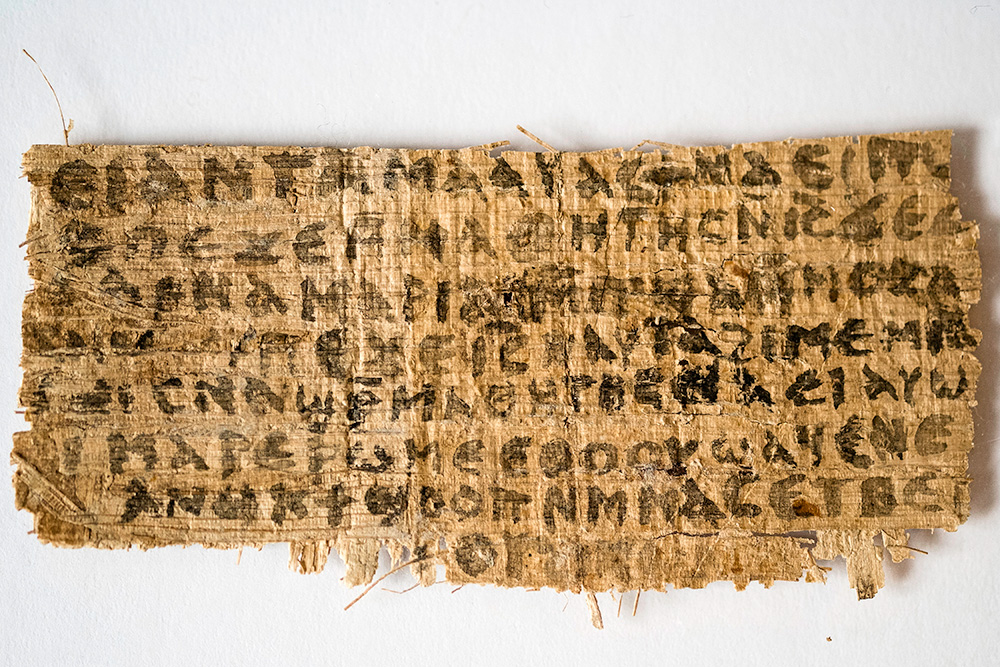
Pictured above is the so-called Gospel of Jesus' Wife. Below is the view of the back. Courtesy: AP

Some Basic Facts
1. The papyrus fragment is about 1.5 by 3 inches, rather small. No other extant manuscript of this text has yet to be discovered.
2. The origin of this fragment is unknown.
3. The fragment has been dated by scholars to somewhere between the 3rd and 4th centuries AD, but as Dr. Daniel Wallace notes, "The date assigned to it—fourth century—is largely an educated guess. Coptic manuscripts are notoriously difficult to date."1
4. The text may have originated in the 2nd century AD, since it seems to have similar ideas found in Gnostic and other texts from that period.
4. The small amount of text does not provide enough information to determine the larger context, nor if it is even merited to refer to the writing as part of the "Gospel" genre.
5. We do not even know if the "wife" reference is some kind of poetic or non-literal expression, and so it hardly even qualifies as evidence that the author believed Jesus was married. Even if the context is literal, all this fragment proves, as Todd Bolen has succinctly stated it, is: "Somebody Once Believed Jesus Had A Wife"2
6. Several scholars have reported that some of the text is very similar to the Gospel of Thomas, and therefore, may be borrowed from that more well-known Gnostic text.
7. Some have suggested the fragment is a forgery.3
8. There is general agreement amongst scholars concerning the translation which King has provided.
Publicized Translation
1 ] “not [to] me. My mother gave to me li[fe…”
2 ] The disciples said to Jesus, “.[
3 ] deny. Mary is worthy of it[
4 ]……” Jesus said to them, “My wife . .[
5 ]… she will be able to be my disciple . . [
6 ] Let wicked people swell up … [
7] As for me, I dwell with her in order to . [
8] an image [ BACK:
1 ] my moth[er
2 ] three [
3 ] … [
4 ] forth which … [
5 ] (illegible ink traces)
We can see how fragmentary and tentative this text actually is. The larger context is not known.
Worldview Prism
No matter how tentative and flimsy the evidence, liberal scholars and atheists glory in any item that might discredit Christ and Christianity.4 –David Miller, PhD
Of particular interest is the media worldview template through which discoveries such as this one are viewed. Scholarly research in institutions such as Harvard is conducted in an environment of virulent secularism and anti-theistic bias. This becomes particularly apparent when research has any bearing on the history of Christianity and the Bible. The massive worldview shift in academia primarily began about three centuries ago during the so-called Enlightenment, inculcating scholars with a worldview that simply does not see Christian theism as a viable intellectual option. Therefore, the interpretation of evidence from the ancient world is seen through a somewhat complex but definitively non-Christian prism.5
The media, by and large, has adapted the same worldview as academia, effectively treating the Christian worldview as anti-intellectual, close minded and backward. So, these types of proclamations should not surprise us. This has been witnessed first hand in recent years in their very positive and breathlessly welcoming reactions to Bart Ehrman, the Da Vinci Code, and so-called "Jesus Family Tomb". The media and the academy work hand in hand with one another to undermine Christian orthodoxy wherever and whenever possible.
The Smithsonian serves as a quintessential example of media cooperation with secularist academia, declaring that the discovery of this minute papyrus was “apt to send jolts through the world of biblical scholarship — and beyond.” With an upcoming TV documentary, they also excitedly proclaimed that “the announcement at an academic conference in Rome is sure to send shock waves through the Christian world.”6
These two powerful cultural machines work hand in hand because they share the same basic presuppositions about the nature of reality. Discoveries such as the "Jesus' Wife" papyrus only serve to affirm their already robustly entrenched rejection of the Christian Gospel. While King has been commended by other scholars for immediately publishing her analysis and for accuracy in that analysis,7 intentionally naming this papyrus, The Gospel of Jesus' Wife, is a transparent attempt at being provocative. This whole episode moves Albert Mohler to correctly affirm:
The energy behind all this is directed to the replacement of orthodox Christianity, its truth claims, its doctrines, its moral convictions, and its vision of both history and eternity with a secularized — indeed, Gnosticized — new version.8
Conclusion
In just a few days, an enormous amount of material has already been written concerning the publication of this discovery. Part of my purpose is to alert ABR supporters and website visitors to quality material and analysis of this fragment. Resources and links can be found in the section below.
More importantly, we urge members of the church to educate themselves on the writing, transmission and preservation of New Testament texts. This includes having a basic understanding of the theology and development of the NT canon, and having resources at your fingertips to answer questions posed by friends, family members, and work colleagues who buy into the erroneous premises and arguments propagated by the media, and those in the academy who cannot escape from the biases which so strongly influence their interpretations of history, especially Biblical history.
When the facts of history are uncovered, examined, and scrutinized, the Bible and the message of salvation and redemption contained therein remain unshaken. Archaeology and textual studies are a great tool for the Christian apologist, they are not his enemy. The apologetic task requires us to painstakingly and gently follow the admonition of Paul, where by we must: "...destroy arguments and every lofty opinion raised against the knowledge of God and take every thought captive to obey Christ." (2 Corinthians 10:5). Equipping ourselves with resources and answers that are faithful to the Gospel exhibits faithfulness to our Lord. Striving for knowledge in faithfulness to the Gospel is the least we can do for the One who endured the horrors of death on our behalf.
Update, September 26, 2012: Jesus Wife Fragment Appears to be a Fake
Recommended Resources Available in the ABR Online Bookstore
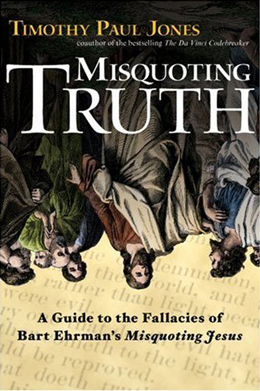
Misquoting Truth Were the New Testament documents widely distorted by copyists? Can we in fact have no idea what was in the originals? Do we have no hope of knowing what eyewitnesses said and thought? Are other documents left out of the New Testament better sources for understanding early Christianity? In clear, straightforward prose, Timothy Paul Jones explores and explains the ins and outs of copying the New Testament, why lost Christianities were lost, and why the Christian message still rings true today.
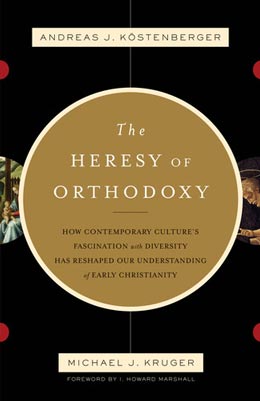
The Heresy of Orthodoxy
Ole heresies and arguments against Christianity have a habit of reappearing long after they have been thought dead. Mainstream skeptic Bart Ehrman has "resurrected" the thesis of radical German critic Walter Bauer. Ehrman argues that there was a not a common "orthodoxy" in the early church. Rather, orthodoxy won the day and shoved other "Christianities" to the side. The new presentation of the Bauer thesis by Bart Ehrman needs a fresh dissection lest readers of it be tempted to think that it demands credence.
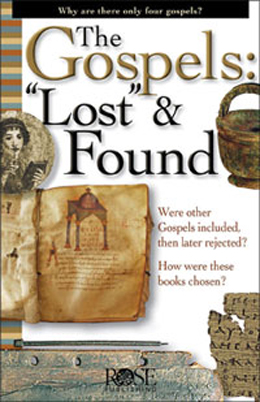
Gospels: "Lost" and Found
This pamphlet gives reasons to trust the New Testament writings, and provides answers to Bart Ehrman’s bestseller Misquoting Jesus: The Story Behind Who Changed the Bible and Why. Author Timothy Paul Jones, Ph.D., shows where the critics are incorrect and provides us with a logical, well-reasoned arguments for believing that Jesus lived, died, and rose again—according to the Scriptures. Now is the time to discuss textual criticism, because critics are bringing this to the public debate and claiming that the Bible cannot be trusted. It is important help Christians become better informed — ready to "defend the faith."
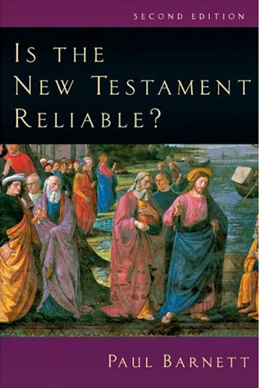
Is the New Testament Reliable? The historical claims of the New Testament--that Jesus performed miracles, fulfilled prophecy, died and rose again, and ascended into heaven--come to us as received tradition, and we receive them in faith, trusting that the New Testament is indeed an inspired collection of writings, that it indeed tells us the truth. Increasingly, the reliability of not just the New Testament but really any document of history is called into question. If everyone writes from a point of view and with an agenda, can we reasonably expect any historical account to be objective--to tell us the truth? In this newly revised edition of Is the New Testament Reliable?, Paul Barnett defends the task of the historian and the concept of history.

Can We Trust the Gospels? Attacks on the historical reliability of the Gospels—especially their portrayal of Jesus Christ—are nothing new. But are these attacks legitimate? Is there reason to doubt the accuracy of the Gospels? By examining and refuting some of the most common criticisms of the Gospels, author Mark D. Roberts explains why we can indeed trust the Gospels, nearly two millennia after they were written. Lay readers and scholars alike will benefit from this accessible book, and will walk away confident in the reliability of the Gospels.
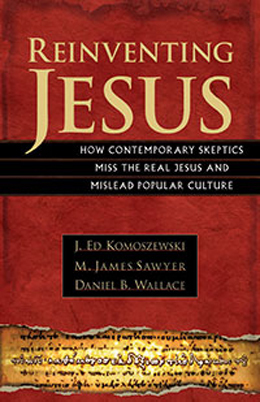
Reinventing Jesus cuts through the rhetoric of extreme doubt to reveal the profound credibility of historic Christianity. Meticulously researched yet eminently readable, this book invites a wide audience to take a first-hand look at the primary evidence for Christianity's origins.This is a serious, detailed, yet eminently accessible refutation of the exaggerated skepticism of bona fide scholars like Bart Ehrman or Robert Price and of the outright misinformation in frequently-believed pseudo-scholarship circulating on the web or via little-known publishing houses.
Recommended Links:
Dr. Michael Kruger's Blog, Cannon Fodder: 10 Misconceptions about the New Testament Canon
I highly recommend Dr. Kruger's excellent book: Canon Revisited: Establishing the Origins and Authority of the New Testament Books
Dr. Mark Roberts: Was Jesus Married? A Careful Look at the Real Evidence
Review of C.E. Hill's Who Chose the Gospels? Probing the Great Gospel Conspiracy (I am presently reading this book and have found it useful in seeing how unbelieving scholars conveniently ignore evidence that supports the historicity and very early acceptance of the four, and only four, Gospels. They also invent unsubstantiated conspiracy theories by the church fathers that have no basis in fact. This book is ideal for those interested in further, in-depth study of the Gospels and NT Canon).
Endnotes:
8. Mohler, Ibid. Dr. Mohler correctly points out King's feminist presuppositions, betrayed by her embrace of the so-called Gospel of Mary, all of which deeply influence her interpretations of historical evidence related to early Christianity.